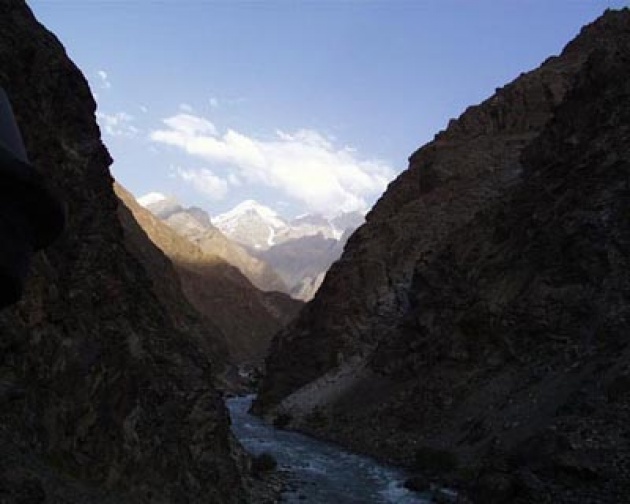
Deep Canyon of Badakhshan province Kookcha River flows inside.
Afghanistan is one of the mineral-rich countries of the world, having $3 billion in untapped mineral deposits which could make Afghanistan one of the richest countries in the world.
Due to last decades of war; Afghanistan was not able to make an environment in order to use its mineral resources, thus Afghanistan economy is still depends on international and foreign aids. Which still the rate of unemployment remains less improved which almost the 33% of population are unemployed and live under poverty line and GDP per capital is almost about $900 – 1000.
During last decades of war and due to the above mentioned situation, Afghanistan’s population have been suffered from the shortages of medical aids, housing, clean drinking water, education and electricity. But since 2002 there has been a lack of exact information and reliable statistical data regarding Afghanistan’s economy. Therefore there is no believes of getting such reliable information about economy growth of Afghanistan. But the information can be provided generally in order to at least rise the strengthens and weaknesses of such reasons which Afghanistan still remained undeveloped or less developing countries in the region.
After Bonn Conference Agreement, Afghanistan was witness to has many international aids and cooperation. Which a lot of money was ramped to Afghanistan and invested in many sectors. But due to lack of planning and administration,
Right now Afghanistan is still depends on foreign aids. I am going to write about the investment on electricity sector.
There are lots of natural water resources (rivers, springs and small lakes) in Afghanistan. For an example:
Kookcha River flows from Hindokush mountain a border between Pakistan and Afghanistan. and continues its trip by crossing the borders between Yumgan, Jurm, Baharak, Faizabad, Yaftal e Payan, Argoo and Kishim districts of Badakhshan about 350 kms and finally joined the Amoo river and goes to Uzbekistan without any benefits to Afghanistan. During 350 km its flow, Kookcha River has 19 sites ready for electricity dam, which 40 – 60% of sites and places are already naturally made and ready for electricity big dams.
It means there are strong rocky walls. And are already built in both sides of the water site naturally. And there is no need to spend a lot of money to make such strong walls in both sides of the dam in order to get the land protected from the damages of water.
Let’s talk about one of those sites called “Do Abgi Kishim” in Kishim district of Badakhshan it is a place where both Kookcha and Kishim rivers are meet each other.
This site’s both dam's walls are already made by rocky mountains and only need a dam in front of the water in order to stock the water be ready for electricity big dam which estimated cost only $100 million. But the government of Afghanistan invested on foreign electricity resources and extended the line between Afghanistan and Uzbekistan and imports electricity to Afghanistan without consideration of Water Resources of Afghanistan. This could be one of the big results of not increasing Afghanistan GDP. Due to lack of energy and electricity. A lot of money was spent on small projects without being administered well by both borrower and donor during projects ‘implementation.
According to British proverb saying; that “it is still early”. Still Afghanistan has time to focus on its free water resources and invest on electricity energy and power in the country.
Once the kookcha electricity dam is made successfully, then the electricity imports will be cut from the abroad and the money of energy consumers will come back to government pocket and creates thousands of jobs with installing a lot of small machineries and industries using electricity power. Besides the industries, Afghanistan will also be able to use the rest of the water which stock by dam in Agriculture sectors and irrigate the arable lands and provide food to its population which another export of corn will be end from the abroad. And this was one of the examples about Afghanistan economy growth.
Written by: Sadaqatullah Sadiq, Feb, 15, 2013, Kabul, Afghanistan



